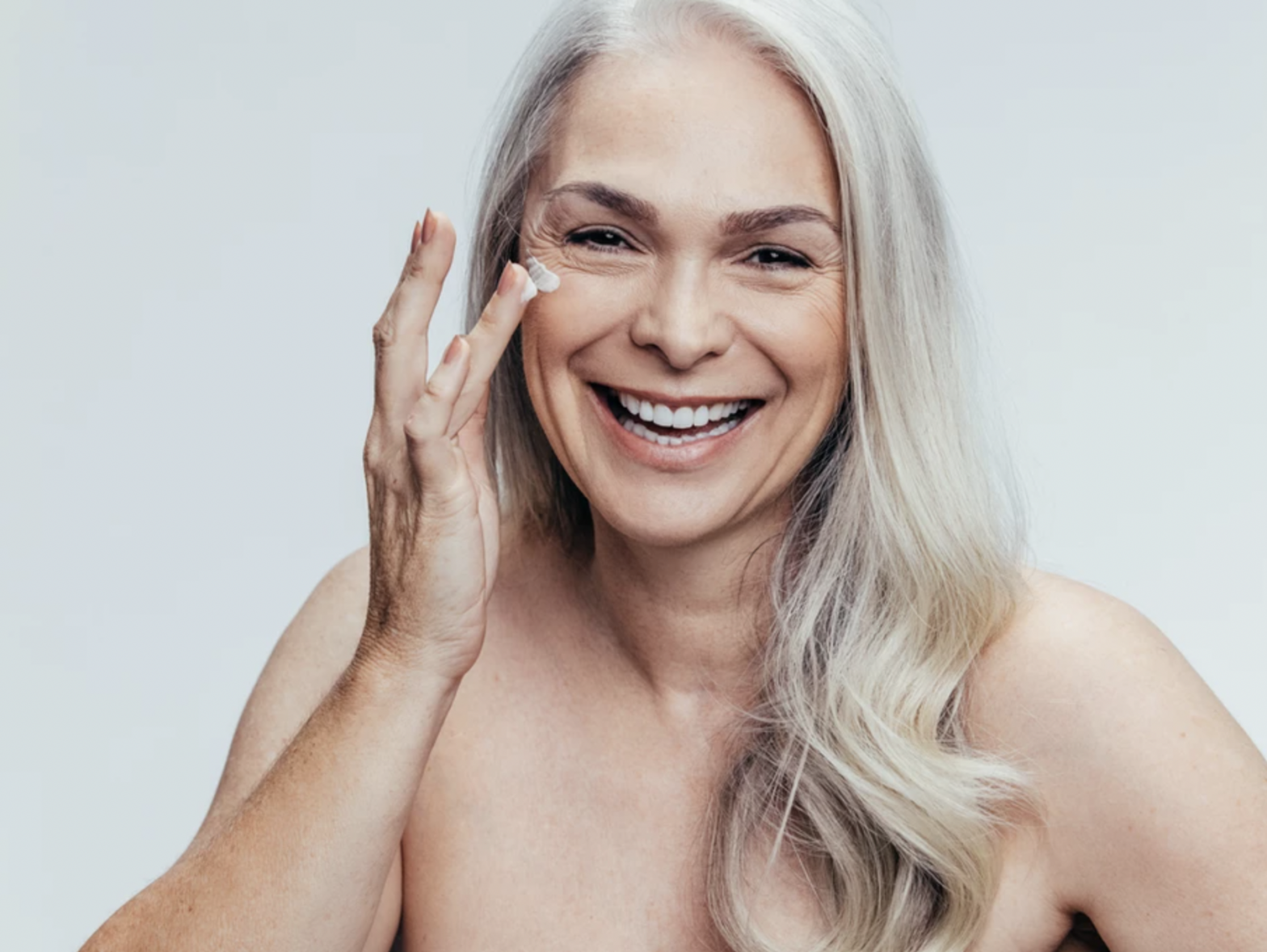While some of the effects of getting older are inevitable, chances are that many of your clients want to maintain a youthful appearance as long as possible. One way you can help your clients look and feel younger is to treat the issue of crepey skin.
What is crepey skin?
Crepey skin looks thin and dry, sometimes loose or saggy, and finely wrinkled like crepe paper. It’s common on the face, neck, and arms and is typically seen in women over 40.
Wrinkles are caused by repeated muscle movements over time, like the lines at the corner of the mouth that develop from smiling throughout your lifetime. Crepey skin is the result of proteins in the skin breaking down, as well as a loss of moisture and natural oils in the skin.
Other causes of crepey skin
Sun damage is one of the most common causes of crepey skin. The sun’s UV rays break down collagen in the skin, making it less elastic and supple.
Smoking and drinking too much alcohol can also lead to crepey skin. Both cigarettes and alcohol slow the replenishment of collagen in the skin. Even exposure to second-hand smoke can have an effect.
Aging is the only unavoidable factor when it comes to crepey skin. As we age, our body produces less oil and so our skin has a weaker barrier to seal in moisture. We also produce less collagen as we get older so we gradually lose the firmness and elasticity of our skin.
The best ways to prevent crepey skin are to avoid excess alcohol, smoking, and sun exposure without sunscreen. But there are treatments that can help slow the effects and repair crepey skin once it’s already an issue.
Topical treatments
There are several topical treatments you can suggest to clients struggling with crepey skin including peptides, retinoids, and alpha-hydroxy acids (AHAs). There are products that contain collagen as well, but there isn’t a lot of research showing topical collagen as highly effective.
Peptides
Peptides are amino acids that the body produces when collagen breaks down in order to send a signal that more collagen is needed. Using a product that contains peptides can help stimulate the body to produce more collagen.
Retinoids
Products containing retinoids have been shown to help repair crepey skin caused by sun damage in particular. Prescription retinoids are often more effective but can cause skin irritation and dryness so they should be used with caution and with a moisturizer.
Alpha-Hydroxy Acids (AHAs)
Common AHAs include citric acid, glycolic acid, and lactic acid. Products containing AHAs can also be helpful with crepey skin caused by sun damage, but have been shown to cause irritation when used in high concentrations.
Professional Treatments
There are several treatments that you can offer to help repair crepey skin.
Fractional Laser Treatment (Fraxel)
This noninvasive treatment uses lasers to heat small areas under your skin to encourage the growth of new collagen.
Infrared
Since heating the dermis creates and shrinks collagen, infrared is another technology that may help to improve the appearance of fine lines and wrinkles. With infrared there is no downtime, can be used on all Fitzpatricks and during all seasons.
Ultrasound
Similar to fractional laser treatment, this treatment uses targeted ultrasound to heat the tissues beneath the skin’s surface. The heat breaks down cells and stimulates new collagen production to tighten the skin. It is not typically used on the upper arm because the nerves are too sensitive and make it uncomfortable.
Fillers
Fillers can be effective in addressing crepey skin as they add volume and reduce wrinkles to the affected area. A common treatment, fillers are most effective on the face.
Cryolipolysis
This is a noninvasive procedure that freezes the lipids in fat cells to cause them to dissolve. It is most helpfu in situations where crepey skin is loose over excess fat as it removes the fat under tthe surface and tightens the skin.
The Bottom Line
Depending on the extent of crepey skin and how quickly your client wants it repaired, you can offer either topical products or professional treatments. Remind clients to be diligent with sun protection and to regularly hydrate skin to help reduce and prevent crepey skin.

